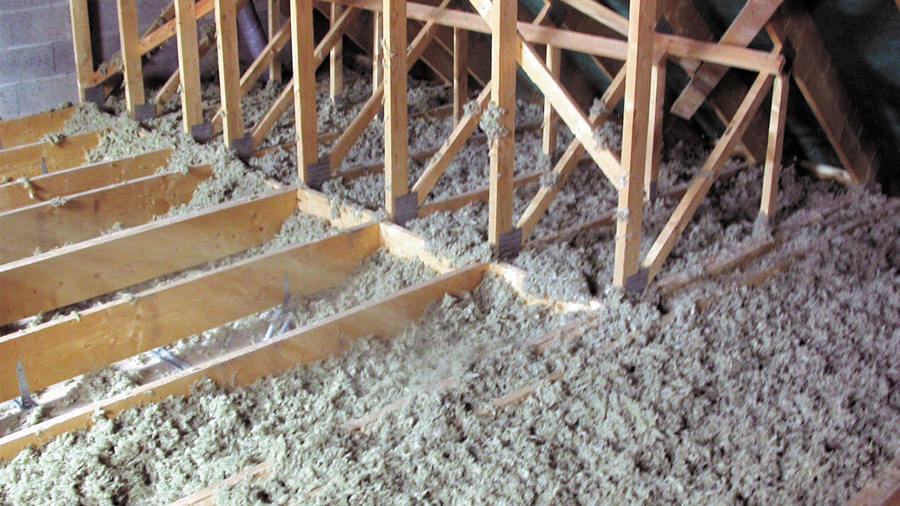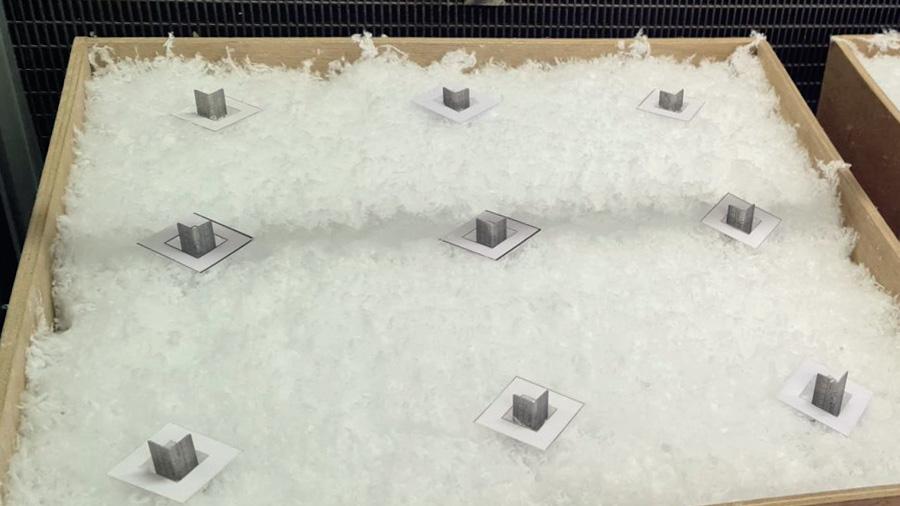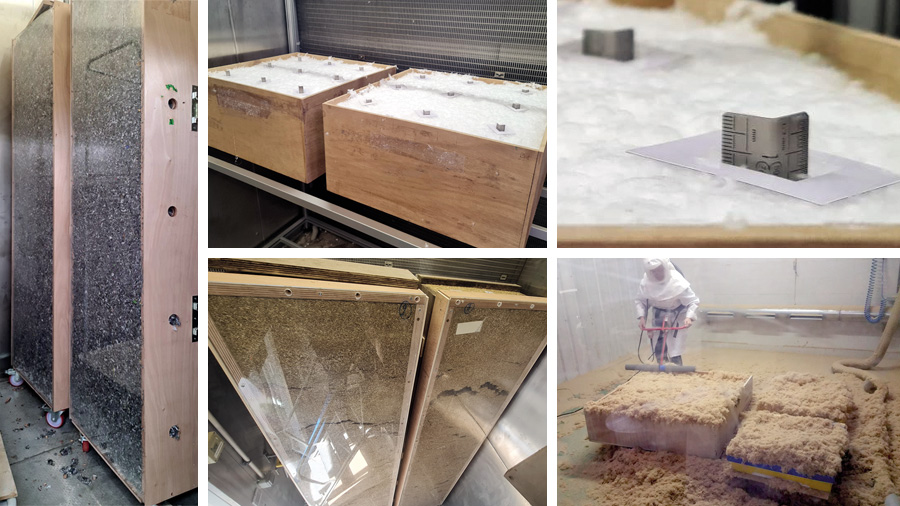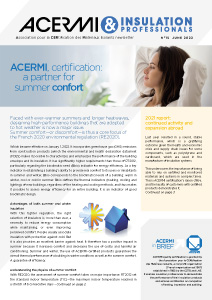2022-06-16
Bulk product compaction tests
Performance

Thanks to compaction tests performed in the laboratory, ACERMI gives users of insulation products a guarantee of thermal resistance measurements. An asset for professionals and a major challenge in the context of energy transition.
Compaction is the loss of thickness over time of bulk products blown onto the floors of unused roof voids, or the loss in height of products installed by blowing into walls. This compaction is natural during the life of the product, and concerns the various families of bulk products, glass and rock mineral wools, and biosourced products (cotton, cellulose, etc.). It must be considered in the same way as the other characteristics of products in choosing the insulation system and building design for new and renovated structures.
Horizontal thermal impact
For products blown onto the floors of unused roof voids, compaction has an impact on the system's thermal resistance.
As a result of varying temperature and humidity, bulk products can experience compaction over time and therefore a decrease in thickness. Because thermal resistance is proportional to thickness, the efficiency of the insulation decreases. This phenomenon must be considered when installing insulation to achieve the thermal insulation expected by the project owner.
This is why the installation of thickness gauges is necessary and checked when completing the end of work sheet, in accordance with DTU 45.11.
To compensate for compaction, an additional quantity of bulk product is used, meaning an additional load. It is understood that this adjustment to compensate for the effect of compaction must be determined and included in the design of the ceiling (particularly the metal frame of its structure), which must be able to withstand this additional load.
Zero vertical tolerance
For products installed by blowing into the cavity between a support and the facing of a partition wall, compaction must be zero because it would result in the appearance of a vacuum in the upper part and constitute a loss of insulation and a source of pathology. It is therefore essential to know the rate of compaction of products to plan for this.

Test protocol
ACERMI laboratories have blowing and supply devices that make it possible to reproduce the use of a product. Product aging simulation is performed in an enclosure under cyclic temperature and humidity conditions, which makes it possible to determine the density and thickness range enabling a product to be used in accordance with the thermal performance displayed.
Tests take place over four months: it is estimated that this period is equivalent to a sufficient product life expectancy under natural conditions. The complete protocol is described in ACERMI Technical Specifications No. 4, «Determination of compaction,» written with all the representatives of the profession. It is viewable on the website www.acermi.com.
Families and reference systems
There are two ACERMI reference systems for the two bulk product families:
- The RP 13 product reference system concerns bulk thermal insulation products for buildings based on mineral wool (wool or rock), i.e. products meeting the harmonized standard NF 14064-1.
- The RP 14 product reference system is for cellulose-based bulk insulation products, which includes cellulose wadding, cotton and wood wool bases. These products are covered by Technical Assessment.

A laboratory for the profession
Thorough knowledge of the physical characteristics of insulation products contributes to the development of energy-efficient buildings. ACERMI pilot members perform tests in their laboratories to characterize the durability and energy efficiency of insulation products and systems. Their respective laboratories use specific devices for packaging products at precise and varied temperatures and humidity, making it possible to perform tests in accordance with current standards.





